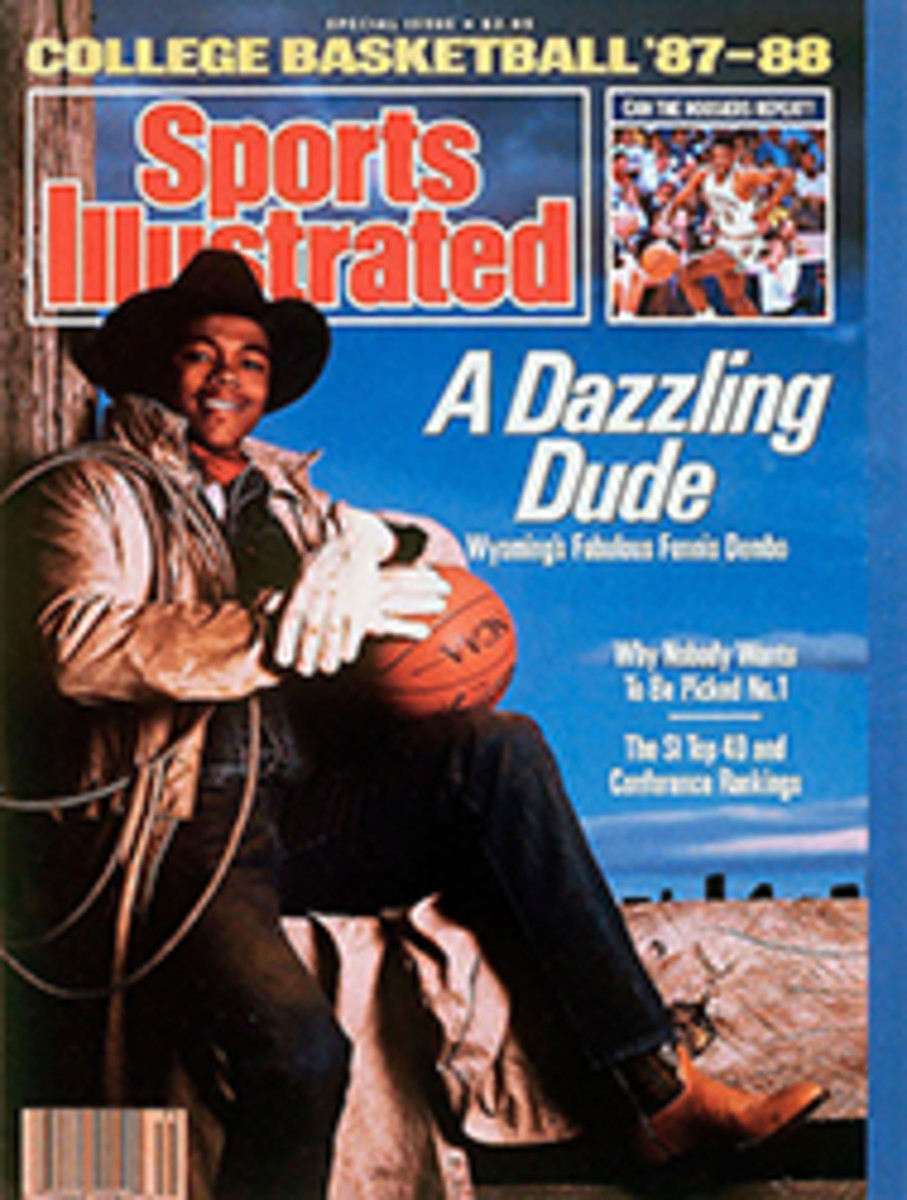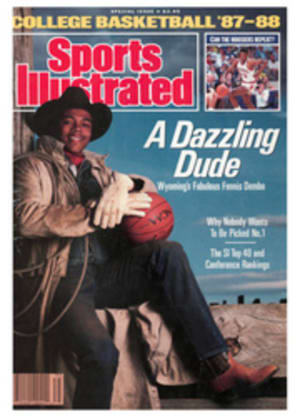
Comin' Back At San Jac
South of Houston, there's an endless neon corridor called the Spencer Highway, a would-be Las Vegas if somebody ever figured out a way to bet on barbecue and striptease and raise-the-roof religion. Lost in the glow of the Golden Acres Assembly of God and the Texas Sugars night club is the Central Campus of San Jacinto (no Junior, please) College.
In this warren of redbrick buildings surrounding a commons raucous with mockingbirds, the curriculum takes on a vocational air. Some students study data processing, others learn to jockey tractor-trailer trucks. Still others matriculate in the underwater-welding program. San Jacinto, it seems, is the most prestigious underwater-welding institution in the country.
But of the 16,967 students who attend San Jacinto's three campuses, only 12 are enrolled in the course that put this school on the map: the SanJac Runnin' Ravens, the most famous junior college basketball program anywhere. When the Ravens take flight in their black and blue and white, half the assistant coaches in America sit in the stands and scheme against the other half, who are sitting four rows down.
Just around the corner from the underwater-welding yard on the Central Campus—not to be confused with the North, or "Baseball," Campus that boasts its own nickname (the Gators), its own colors (green and gold) and its own famous athletic alumnus (Boston Red Sox pitcher Roger Clemens)—is a wide, flat building divided into three separate units. At one end is the pro shop for the San Jacinto golf course. At the other is the apartment of head basketball coach and athletic director Scott Gernander, who last spring succeeded the ludicrously successful Ronnie Arrow (301-43, three national juco championships). It's a pleasant, airy little place, which, alas, directly abuts the parking lot where students learn to drive the Big Rigs. Every 20 minutes or so, it sounds as if somebody has dropped the Verrazano-Narrows Bridge out a window.
Between the pro shop and the Gernander residence is the middle third of the building, which functions as the SanJac athletic dorm, the only housing on campus. By Kentucky's Wildcat Lodge standards, this is a Motel 6. Tiny rooms line a long hallway that empties into a common room, where wastebaskets are set on tabletops so the room can function as a practice court. "I saw this," says forward Moses (Ice) Scurry, "and I knew I was here for business."
Serious business. SanJac is the Last Chance Saloon of college hoops, famous from Detroit to D.C. as the place to get your game and your life straight, or to fail at both altogether. "I went to SanJac because I felt it ending for me," says guard Greg (Boo) Harvey, now at St. John's. "That was a scary feeling." Center David Butler from Washington, D.C. says, "I look at it as my last chance. I messed up bad in high school. I needed to get some discipline in my life and to play for a team."
"I had to get out of the city," explains Arnold (A-Train) Bernard, a 5'5" guard from the Patterson housing project in the Bronx. "I had to get as far away as I could. And I had to go with the best. Everybody in New York knows about SanJac. SanJac can get you to the pros." Indeed, short as he is, A-Train hopes to follow in a long line that includes pros Tom Henderson, Larry Spriggs, Ray Williams and Walter Berry. This is as much a vocational education as the underwater welding that John McAvoy teaches. "We all root for them," says McAvoy. 'They're learning their trade just like my students are learning theirs." Even if a player doesn't reach the NBA, virtually all win a major college scholarship. SanJac has a high profile because the Ravens win so much—but also because of its success at pipelining players into big-time programs.
When Arrow took the head coaching job at South Alabama, Gernander, Arrow's assistant, was tempted to follow him to Mobile. "But," says Gernander, "this is better than most Division I jobs." Other junior colleges cast a jaundiced eye on SanJac recruiting, pointing to the conspicuous connection between basketball and the school's administration, which includes chancellor Tom Sewell (143-92 as SanJac's first basketball coach), vice-chancellor Ron Rucker (88-5 as Sewell's successor) and administrative dean Dean Evans (162-33 after Rucker). "Let's put it this way," says one tactful rival. "When it comes to getting kids in and keeping them in, I wish all of my bosses were former coaches."
Nevertheless, players must attend class. Every day. One cut means that the player must run one mile at dawn with Gernander. Two cuts, two miles; three cuts, three miles. Gernander can run up to 10 miles, but no player has tested him.
On the court, the Ravens are always running. They have lost only one game in two years with the freewheeling style characteristic of juco ball, but which has only recently begun to earn respect. "It seems the stigma is lessening." says Gernander. "You used to see a junior college kid make a move, and somebody would say, 'Aw, he doesn't have the juco out of his game yet.' Well, Michael Jordan hangs in the air for 20 minutes, and nobody says Jordan makes juco moves. It's all basketball. That's all it is."
PHOTO
DAVID E. KLUTHO
The Ravens keep on truckin': (from left) Butler, Eddie Cumbo, Bernard, Coach Gernander, Darryl Reid, Lenzie Howell and Scurry figure to roll over opponents again this year and remain big wheels on campus.

